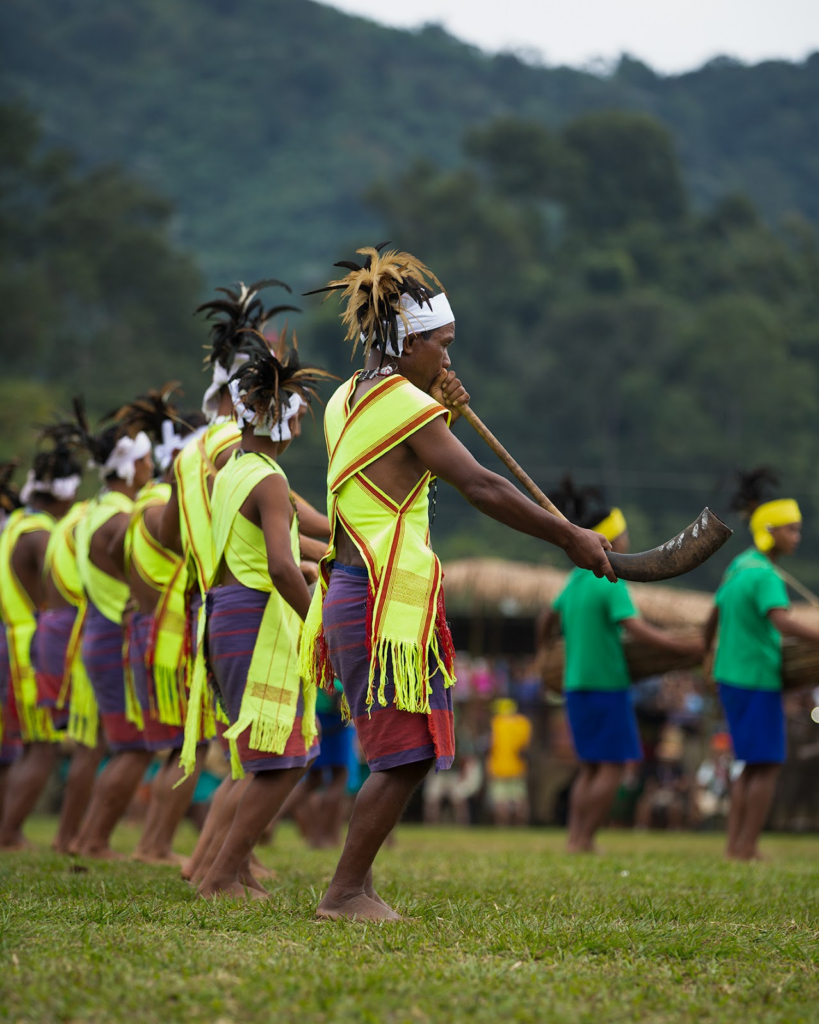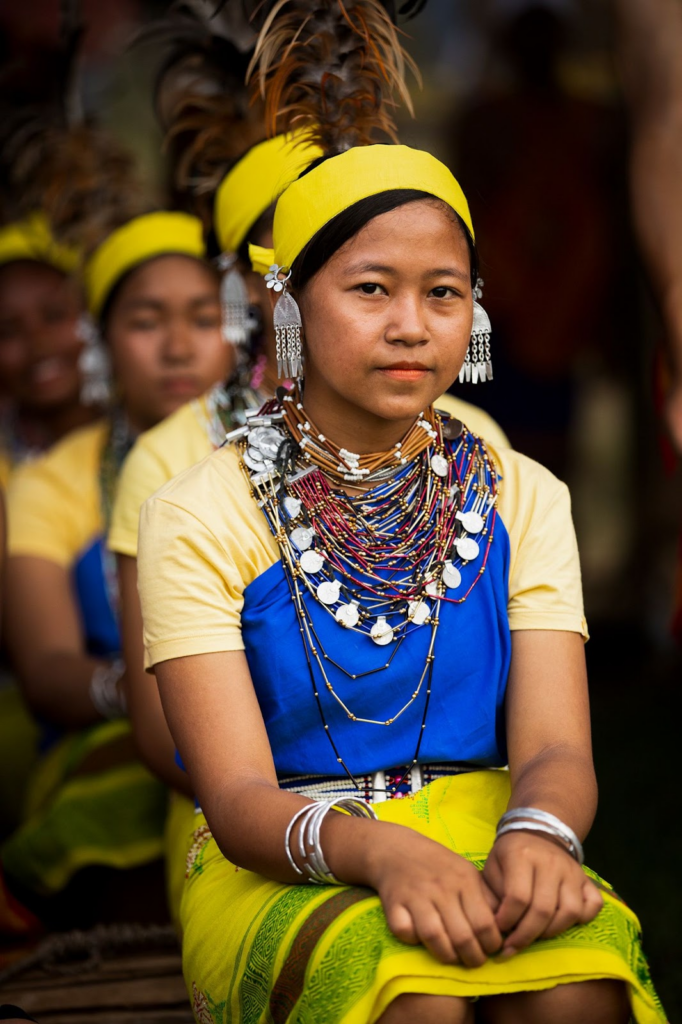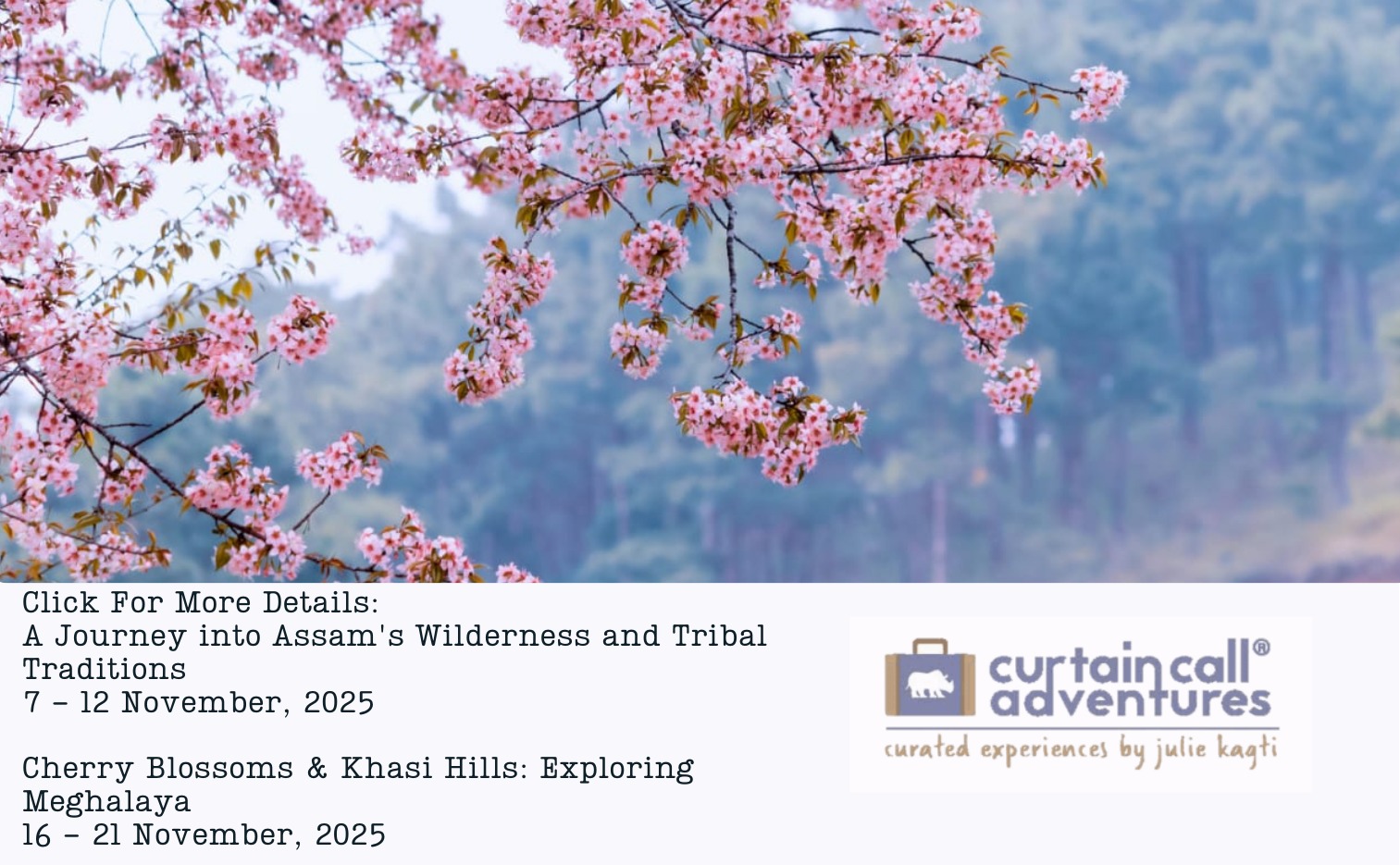If you visit Garo Hills in the state of Meghalaya in early November, chances are that you’ll be greeted by the sound of beating drums reverberating through this beautiful hilly region. After all this is when the Garos – a major tribe originating from Meghalaya – celebrate their main harvest festival known as Wangala. Paying tribute to the Sun God, Saljong, this largely agrarian community observes several rituals as a mark of thanksgiving as well as a way to seek divine blessings for the next harvest cycle during this festive period.
While the rituals may vary slightly from village to village and are marked by worship and sacrifices, the festival begins with the ceremony of Rugala which takes place at the Nokma or village chief’s house. Traditional rice beer and crops harvested are first offered to the deity. This is followed by Wanti toka, where paste made from rice is used to decorate all the houses in the village. The following day, the villagers gather at the Nokma’s house again to perform the Sasat Sowa ceremony (marked by burning of incense obtained from the Sasat tree) at the central pillar of his house.
According to an article in The Meghalayan, “The Sasat is an important aspect of Wangala, according to our forefathers; it was the first tree to ever be shaped by our maker. The smoke will go out along the Maljuri (the main post of the house). Some interpretations say that if it goes out smoothly without smoking up the whole house, it signifies blessings of the gods and a good harvest for the following cycle.” After the first Wangala dance at the Nokma’s house, every house hosts guests with food and rice beer. The closing ceremony known as Rusrota is observed to ensure that the crops are kept safe in the granaries.
For visitors interested in witnessing the colourful festivities, the 100 Drums Wangala Festival which takes place in November over a three-day period, is the perfect opportunity. Started in 1976 at Asanang, the Headquarters of Rongram Development Block near Tura, the 100 Drums festival has grown over the years under the patronage of the Government of Meghalaya. The festival derives its name from the 10 dancing troupes participating in the yearly competition, each having 10 drummers with a cumulative total of 100 drums.

The Wangala dance depicts different stages of cultivation and also the everyday life of the people. As per The Meghalayan article, “Some of these formations mimic how nature and its elements move – the sway of trees and the dance of birds and animals. Dokru sua depicts two doves – believed to be humans once – pecking at each other; chambil moa, represents the pomelo fruit; makkre rika shows the act of chasing away monkeys and other animals that harm crops.” The Dama (the traditional drum) and the Adil (a buffalo-horn trumpet) constitute the signature sounds of Wangala, among others.

Apart from the rhythmic folk dances, this is also a great opportunity for visitors to take in the intricate hand woven attire and handmade accessories worn by the members of the Garo community. Women are dressed in bead-embellished chroko ganna, ganna dakmanda (wrap), chinani (shawl), ganna kore kinga (traditional top) and kotip (a headscarf-like accessory). The men are dressed in gantap (wrap), genji gisim (shirt) or they can also replace that with a pandra (a crisscrossed cloth worn across the body) and kadesil is the distinctive headgear. Coral, shells, beads, and silver dominate the many ornaments worn by the men and the women.
The festival also showcases traditional sports, food stalls offering local delicacies, handicraft exhibitions, martial art displays and more.
Images by Shalini Shiv Prasad

